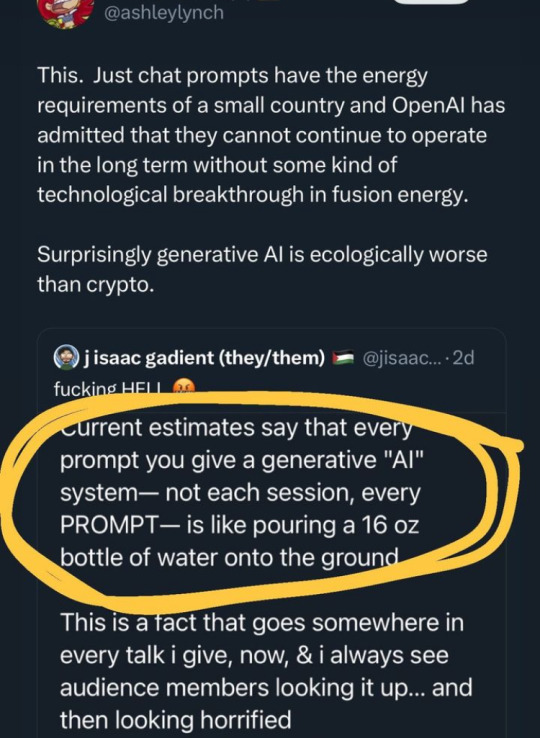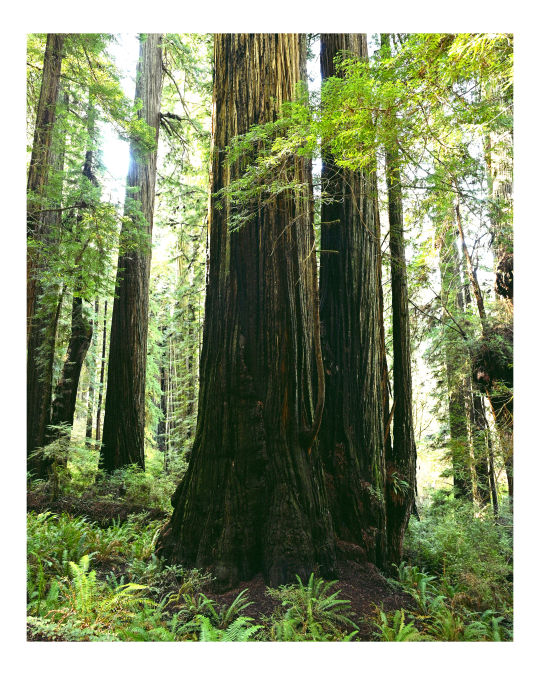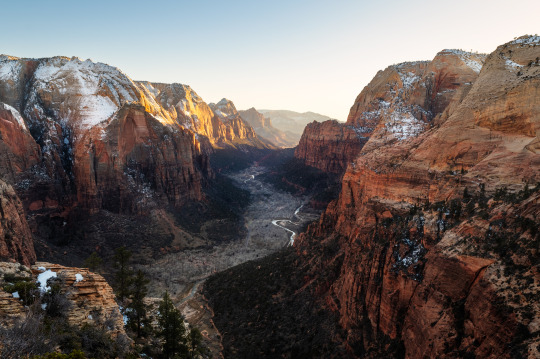#national land
Explore tagged Tumblr posts
Text

LETTERS FROM AN AMERICAN
August 8, 2023 (Tuesday)
As he designated the new Baaj Nwaavjo I’tah Kukveni–Ancestral Footprints of the Grand Canyon National Monument today, President Biden explained that protecting the approximately 1,552 square miles—4,046 square kilometers, or almost a million acres—of land to the north and south of the Grand Canyon “is good not only for Arizona, but for the planet. It’s good for the economy. It’s good for the soul of the nation. And I believe…in my core it’s the right thing to do.”
His administration has been pursuing the promise he made when he first took office to protect 30% of all the nation’s lands and waters by 2030. He noted that the administration has protected 9 million acres in Alaska, 225,000 acres in Minnesota, 50,000 acres in Colorado, 500,000 acres in Nevada, and 6,600 acres in Texas. It has restored protections for three national monuments the previous administration had gutted: Grand Staircase–Escalante and Bears Ears in Utah and Northeast Canyons and Seamounts off the New England coast. Interior Secretary Deb Haaland is working on creating a maritime sanctuary by protecting 770,000 square miles in the Pacific Ocean southwest of Hawaii.
The administration is also, he said, honoring his commitment “to prioritize respect for the Tribal sovereignty and self-determination, to honor the solemn promises the United States made to Tribal nations to fulfill federal trust and treaty obligations.” The protected land is home to 3,000 cliff houses, cave paintings, and other Indigenous cultural sites. Biden explained that the land being protected and the land already protected as the Grand Canyon National Monument had been Indigenous homelands.
Tribes had been excluded from those lands and have worked to protect the lands and waters there from the aftershocks of development, for example, cleaning up abandoned mines. The Bipartisan Infrastructure Law included funding to clean up such industrial pollution in the region, including the abandoned oil wells that leak toxic gases into the air and hazardous chemicals into the water. That work is underway.
Biden suggested this designation was also part of the administration’s effort to address climate change, calling out the historic investments in that effort funded by the Inflation Reduction Act, a claim that might well resonate in a state that has seen temperatures of more than 110 degrees Fahrenheit (43 Celsius) in Phoenix for 31 straight days.
According to the White House proclamation on the establishment of the new monument: “The natural and cultural objects of the lands have historic and scientific value that is unique, rich, and well-documented.” By creating the monument, Biden said, “we’re setting aside new spaces for families to hike, bike, hunt, fish, and camp—growing the tourism economy that already accounts for 11 percent of all Arizona jobs.”
But Republican leaders and uranium mining interests opposed the designation of the new monument because it will stop the development of new mines to access the approximately 1.3% of the nation’s known uranium reserves that lie inside the monument. While the two mines already operating in the monument are grandfathered in and other reserves are elsewhere, mining interests in Arizona wanted new development. They claim the uranium in the area, which could be used in nuclear reactors, is vital to U.S. security.
Science reporter Justine Calma of The Verge explained today that past uranium mining left 500 abandoned mines on Navajo Nation land and that pollution from the mines has been linked to life-threatening illnesses among children there.
In a letter to Biden, Haaland, and the heads of the Bureau of Land Management and of the U.S. Forest Service, House Republicans Bruce Westerman of Arkansas, chair of the Committee on Natural Resources, and committee member Paul Gosar of Arizona called the new designation “another strident abuse of the Antiquities Act” and demanded documents justifying the decision to put the area’s uranium out of developers’ reach.
In Ohio’s important election today, voters rejected the attempt of the Republican-dominated legislature to strengthen minority rule in the state by making it harder for a political majority to change the constitution. High turnout resulted in a vote whose unofficial count was about 57% against and about 43% in favor. Even key Republican districts voted against the measure.
For more than a century, Ohio voters have been able to put a constitutional amendment on the ballot so long as they get a certain number of signatures, and the amendment passes if it gets more than 50% of the vote. But the overturning of the 1973 Roe v. Wade decision in June 2022 sparked a strong backlash across the country. In Ohio, abortion rights activists began to collect signatures to get a constitutional amendment on the ballot in November, and it was clear they would succeed (in July they submitted 70% more signatures than they needed).
So in May, Ohio Republican legislators set a special election in August to require more signatures to get a constitutional amendment on the ballot and a threshold of 60% of the vote, rather than a simple majority, for the amendment to pass. That’s a very high bar, although, ironically, two amendments that tried to stop political gerrymandering—the practice that has given Republicans a supermajority in the state legislature—passed with about 75% of voters…and the Republicans ignored them.
Only last December the legislature ended most August elections because the traditionally low turnout made it easy for special interests to win by flooding the state with advertising money to energize a small base.
Although the position of secretary of state is supposed to be nonpartisan because the office oversees the state’s elections, Ohio’s Republican secretary of state, Frank LaRose, said: “This is 100% about keeping a radical pro-abortion amendment out of our constitution.”
But the implications of making it harder for voters to change laws stretched beyond Ohio. As pro-choice ballot initiatives keep winning, Republican-dominated legislatures across the country are trying to make it harder for citizens to use ballot initiatives. Republican attempts to stop voters from challenging their policies, especially in states where gerrymandering has given them far more seats in the legislature than would accurately represent their support, will echo beyond the issue of abortion to any policy voters would like to challenge.
A former chief justice of the Ohio Supreme Court, Republican Maureen O’Connor, told Sam Levine of The Guardian that the proposed measure “absolutely is minority rule…. If you get 59.9% of a vote that says yes, 40.1% can say no. This is the way it’s gonna be. We can thwart the effort of the majority of Ohioans that vote. And that’s not American.”
LETTERS FROM AN AMERICAN
HEATHER COX RICHARDSON
#Biden Administration#Grand canyon#national land#Environmentalism#climate change#national monuments#Heather Cox Richardson#Letters from An American
2 notes
·
View notes
Text

#ai#ai art#climate change#ecology#ecocide#water rights#land back#respect water treaties with First Nations#wasteland#waste#waste fraud and abuse#desertification
63K notes
·
View notes
Text

19K notes
·
View notes
Text
"A tribal-led nonprofit is creating a network of native bison ranchers that are restoring ecosystems on the Great Plains, restoring native ranchers’ connections with their ancestral land, and restoring the native diet that their ancestors relied on.
Called the Tanka Fund, they coordinate donors and partners to help ranchers secure grazing land access, funds needed to install and repair fencing, increase their herd sizes, and access markets for bison meat across the country.
That’s the human part of the story. But as Dawn Sherman, executive director of the Tanka Fund, told Native Sun News, they’re “buffalo people” and these four-legged, 2,000 lbs. “cousins” are equal-part-protagonists.
The return of the bison means the return of the prairie, one of the three great grassland ecosystems on the planet, of which just 1% remains as it was when the Mayflower arrived.
“Bringing buffalo back to their ancestral homelands is essential to restoring the ecosystem. We know that the buffalo is a keystone species,” said Dawn Sherman, a member of the Lakota, Delaware, Shawnee, and Cree.
“Bringing the buffalo back to the land and to our people, helps restore the ecosystem and everything it supports from the animals to the plants to the people. It’s come full circle. That’s how we see it.”
As Sherman and the Tanka Fund help native ranchers grow their operations, everyone is well aware of the power of the bison to transform the environment: just as nations across Europe are, who are reintroducing wood bison to various ecosystems, for all the same reasons.
Sherman points out the variety of ways in which buffalo anchor the prairie ecosystem. The almost-extinct black-footed ferret, she points out, lived symbiotically with the bison, and with the latter gone, the former followed—nearly.
The long-billed curlew uses bison dung as a disguise to hide nests from predators. Deer, pronghorn antelope, and elk all rely on bison to plow through deep snows and uncover the grasses that these smaller animals can’t reach.
Everywhere the bison hurls its massive body, life springs in the beast’s wake. When bison roll about on the plains, it creates depressions known as wallows. These fill with rainwater and create enormous puddles where amphibians and insects thrive and reproduce. Certain plants evolved to grow in the wet conditions of the wallows which Native Americans harvested for food and medicine.
Native plants evolved under the trampling hooves of millions of bison, and that constant tamping down of the Earth is a key necessity in the spreading of native wildflower seed.
Indeed, Sherman says some of these native ranchers are bringing bison onto lands still visibly affected by the Dust Bowl, and already the animals are acting like a giant wooly cure-all for the land’s ills.
Since 2020, the Tanka Fund, in partnership with the Inter-Tribal Buffalo Council and the Nature Conservancy, has overseen the transfer of 2,300 bison from Nature Conservancy reserves to lands managed by ranchers within the Tanka Fund network.
“[T]he more animals that we can get the more of that prairie we can restore,” said Sherman. “We can help restore the land that has been plowed and has been leased out to cattle ranchers.”"
youtube
-Article via Good News Network, February 13, 2025. Video via Tanka Fund, July 17, 2024.
#indigenous#indigenous peoples#first nations#native americans#bison#ecology#ecosystem#ecosystem restoration#keystone species#endangered species#environment#prairie#great plains#land back#good news#hope#Youtube
11K notes
·
View notes
Text



landback.
#north dakota#painted canyon#so beautiful#landback#land back#photography#landscape photography#landscape#theodore roosevelt national park#my post
2K notes
·
View notes
Text

How the Trump and DOGE cuts could ruin National Parks this summer
434 notes
·
View notes
Text
Joel Jackson, the president of the Organized Village of Kake, a tribal community, has lived within the Tongass National Forest in Alaska his entire life. His community relies on the land for hunting deer and fishing salmon that swim in streams kept cold by the old-growth forest.
But the 66-year-old worried about damage to that land - the largest national forest in the US - after former President Donald Trump rescinded a measure blocking logging and road-building on nine million acres of land in the Tongass in 2020.
"The forest is key to our survival as a people, to our way of life … for thousands of years," Mr Jackson said.
Last week marked a long-awaited victory for Mr Jackson and other tribes and environmental groups who petitioned the US Department of Agriculture (USDA) to reinstate the protections for the forest.
The agency announced last Wednesday it would once again ban logging and the construction of roads for cutting timber in over half of the Tongass.
#alaska#good news#give the land back#that will protect it better than a ban that can be reinsinced by the next president#but hey#good news is good news#tongassnationalforest#tongass#Organized Village of Kake#indigenous people#first nations
2K notes
·
View notes
Text
And we wouldn’t have to pay to see ourselves in museums.
Source
#indigenous#native#land back#first nations#native people#native american#mesoamerica#indigena#native america#turtle island#ndn tumblr#1492#ndn#n8v#ndn tag#decolonize#videos
1K notes
·
View notes
Text

Mesmerizer
#kirby nation i'm still alive i came to deliver my monthly post 🙏#kirby#fanart#kirby series#ibispaintdrawing#meta knight#kirby and the forgotten land#for an art trade with a friend#ghostbny's art#kirby return to dreamland
392 notes
·
View notes
Text
This Earth Day I grieve the ancient olive groves of Palestine, I grieve the groundwater and once unpolluted oceans of that same beautiful land. I feel an indescribable rage when I picture occupation forces burning these sacred groves to the ground and salting the earth that remains.
This Earth Day I wish for a free Palestine, Sudan, Congo, Hawai'i. For the freedom of their people and their lands. You can not fight for a cleaner healthier planet without fighting against imperialism.
#earth day#free palestine#free congo#free sudan#land back#free hawaii#anti imperialism#conservation#first nations#free hawai'i
954 notes
·
View notes
Text
Thanksgiving dinner: hermit crab edition
#hermit crab tip#hermit crabs rule#land hermit crabs#hermit crab art#hermit crab care tips#hermit crab tank#hermit crab life#hermitcrabs#hermitcrab#hermit crab#hermit crabs#crustacean nation#animals#exotic pets#hermitcrabsrule#crabs crabs crabs#marine hermit crabs#hermit crabs eating#crabs are cool#i love crabs#mr crabs#crabs#tumblr crabs#crustaceannation#animal video#pets#hermit crab lover#sea shells#nature#art
357 notes
·
View notes
Text


a huge two-stem Redwood with beautiful trunk flare
Redwood National Park, California
#redwoods#forest floor#coastal forest#ancient trees#old growth forest#dendrophilia#redwood national park#public lands#forest photography#nature photography#landscape photography#original photographers#nikon photography#nikon#24mm-120mm#photographers on tumblr
850 notes
·
View notes
Text

Top of the world. The view from Angels Landing in Zion.
414 notes
·
View notes
Text

“Hey Ranger! Is that a California Condor or a Turkey Vulture?”
Well, let’s take a closer look! In the summertime, it can be hard to tell the difference between a condor and a turkey vulture, especially as they soar above you! (Or below you, if you’re on Angels Landing). The bird on the right is definitely a condor, and here are a few ways to tell: Condors are BIG! They have a ten-foot wingspan, the widest of all the birds in the United States. Notice the number on their wing? Each condor has their own number to help scientists recognize and keep track of the condors they spot. Their wings are white towards their center, and their feathers are black out towards the end of their wings. You guessed it, the bird on the left is a turkey vulture! Turkey vultures are quite large birds, but their wingspan is typically around 5.5 feet long. In flight, turkey vultures will have a slight “v��� in their wings when looking at them from straight on. Condor wings are generally straight out when they are in flight. Turkey vulture wings are darker in the middle and the feathers are white toward the ends of their wings. Though they are different birds, both are critically important in Zion National Park. Their food source is carrion, or dead and decaying meat (you could say they are the ultimate clean up crew). Since decomposition takes much longer in the harsh desert, having scavengers is a great way to keep the area looking (and smelling) nice. What are ways you can protect these important animals?
Learn more about the California Condor recovery story at:
https://www.nps.gov/zion/learn/nature/condors.htm
NPS Photo: Gavin Emmons
via: Zion National Park
477 notes
·
View notes
Text
"In a historic “first-of-its-kind” agreement the government of British Colombia has acknowledged the aboriginal ownership of 200 islands off the west coast of Canada.
The owners are the Haida nation, and rather than the Canadian government giving something to a First Nation, the agreement admits that the “Xhaaidlagha Gwaayaai” or the “islands at the end of world,” always belonged to them, a subtle yet powerful difference in the wording of First Nations negotiating.
BC Premier David Eby called the treaty “long overdue” and once signed, will clear the way for half a million hectares (1.3 million acres) of land to be managed by the Haida.
Postal service, shipping lanes, school and community services, private property rights, and local government jurisdiction, will all be unaffected by the agreement, which will essentially outline that the Haida decide what to do with the 200 or so islands and islets.
“We could be facing each other in a courtroom, we could have been fighting each other for years and years, but we chose a different path,” said Minister of Indigenous Relations of BC, Murray Rankin at the signing ceremony, who added that it took creativity and courage to “create a better world for our children.”
Indeed, making the agreement outside the courts of the formal treaty process reflects a vastly different way of negotiating than has been the norm for Canada.
“This agreement won’t only raise all boats here on Haida Gwaii – increase opportunity and prosperity for the Haida people and for the whole community and for the whole province – but it will also be an example and another way for nations – not just in British Columbia, but right across Canada – to have their title recognized,” said Eby.
In other words, by deciding this outside court, Eby and the province of BC hope to set a new standard for how such land title agreements are struck."
-via Good News Network, April 18, 2024
#canada#indigenous#first nations#haida#british columbia#canadian politics#land back#indigenous peoples#indigenous rights#indigenous land
18K notes
·
View notes
Text
Calling US Federal Seasonals and Seasonal-Hopefuls!
Please help me get some better-than-anecdotal answers for the managers at my work (and elsewhere if I can spread it around).
My next post will share what (little) I've been told about federal seasonal hiring. So check that out if you're in this nasty limbo.
Please reblog for best data!
#us federal seasonal hiring#seasonal hiring#us politics#us federal government#us federal workers#usa#USAJobs#reblog for science#and for helping land managers know wtf is going on with hiring#'cause OPM sure isn't saying much#altgov#national park rangers#nps#usfs#national forests#national park service#us forest service#bureau of land management#blm#seasonals
158 notes
·
View notes